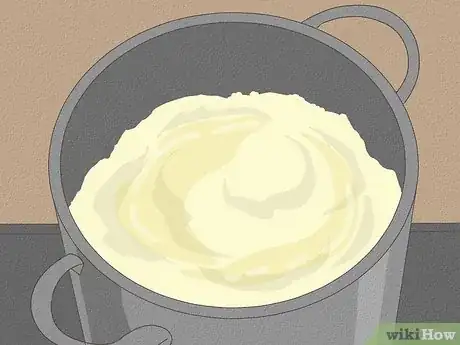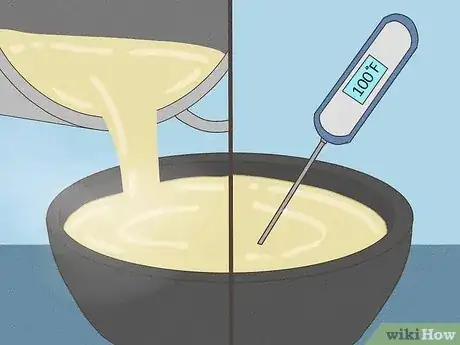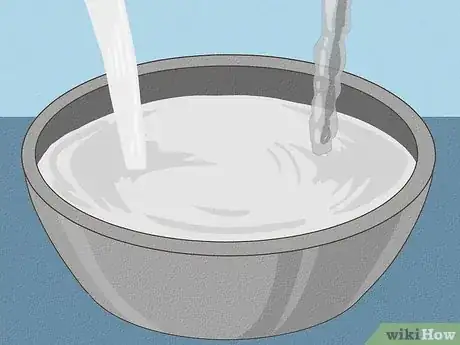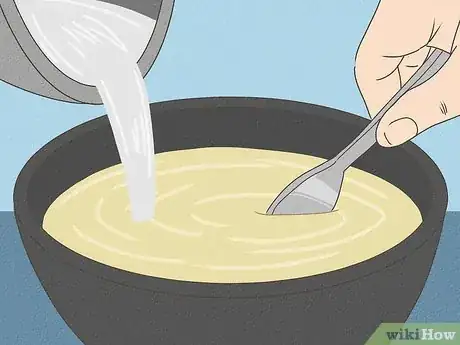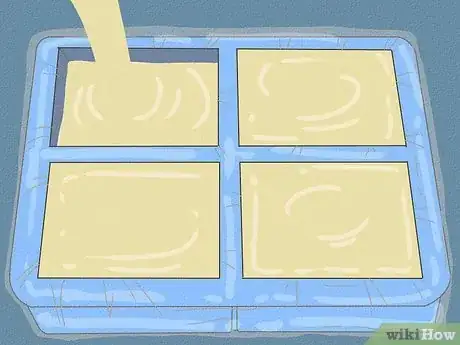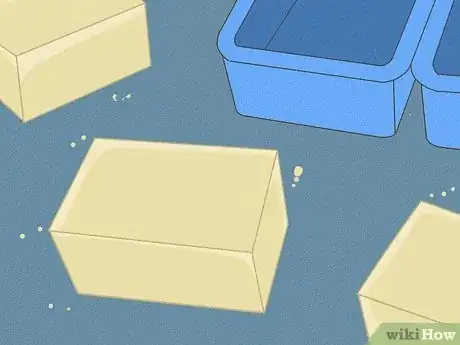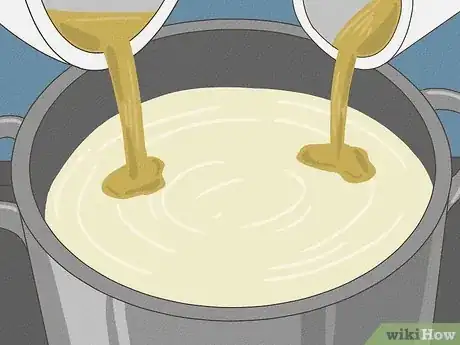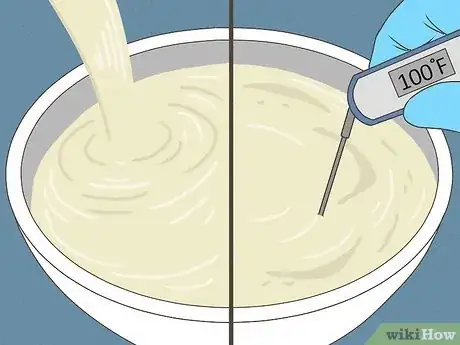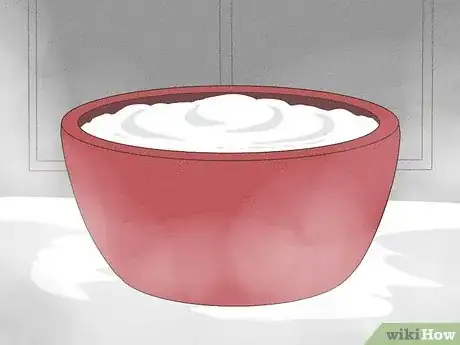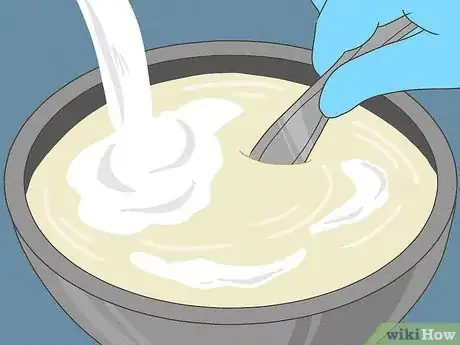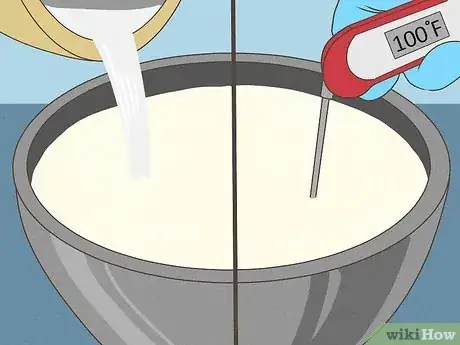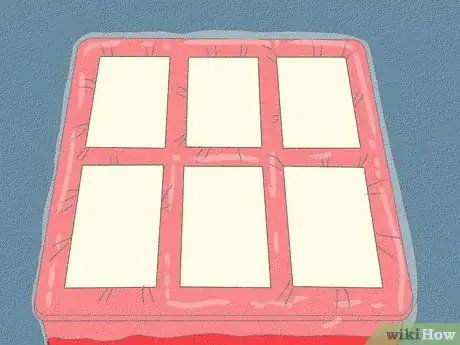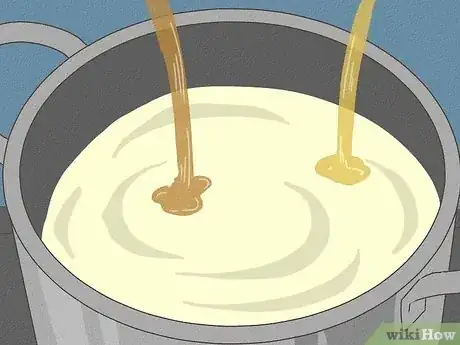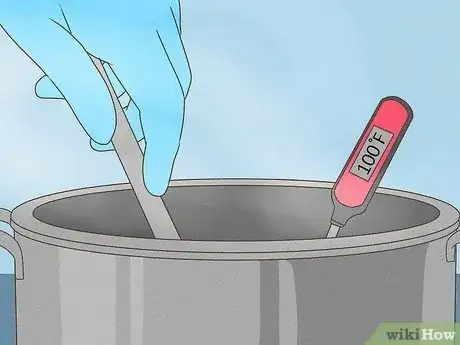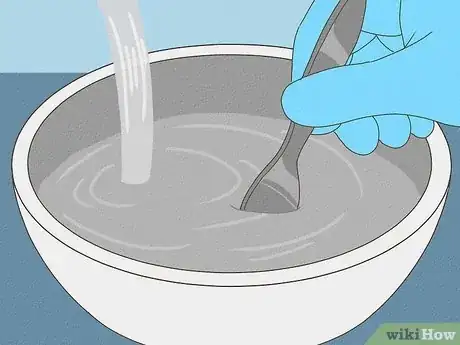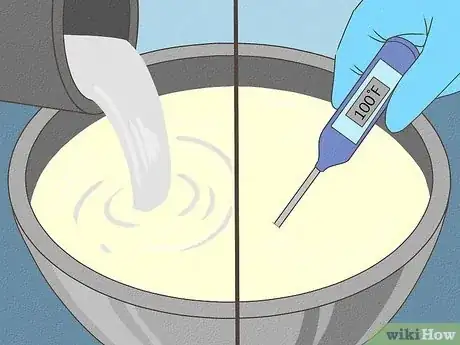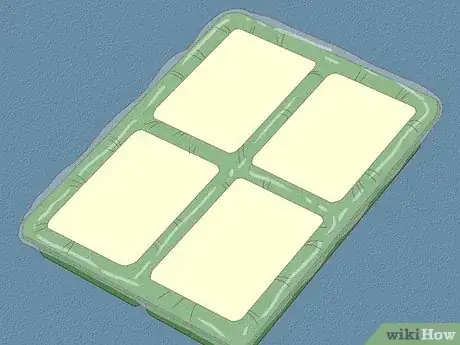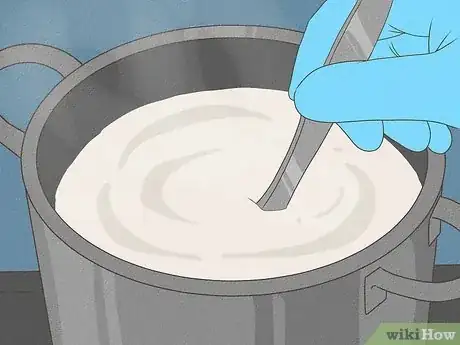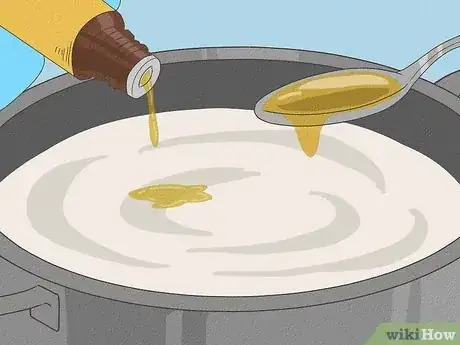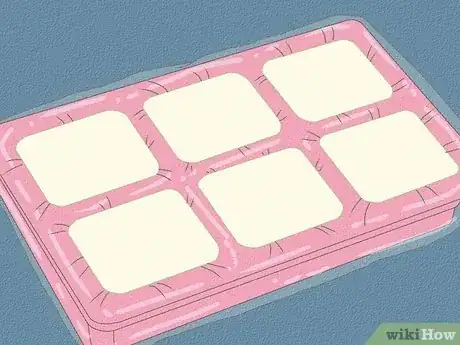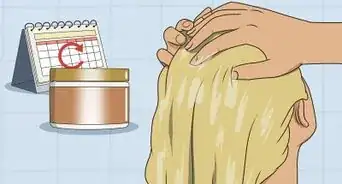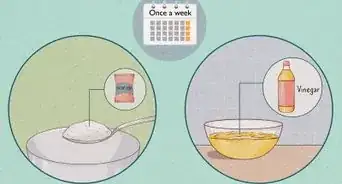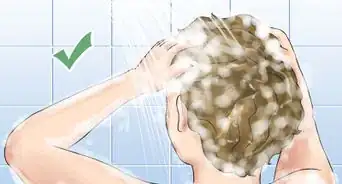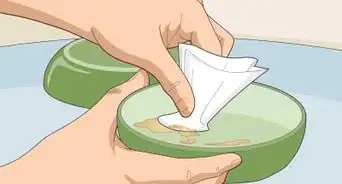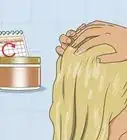This article was co-authored by wikiHow staff writer, Johnathan Fuentes. Johnathan Fuentes is a writer based in the New York City region. His interests as a writer include space exploration, science education, immigration, Latinx cultures, LGBTQ+ issues, and long-form journalism. He is also an avid hiker and has backpacked in Alaska and Newfoundland, Canada. A son of Cuban immigrants, he is bilingual in English and Spanish. Prior to joining wikiHow, he worked in academic publishing and was a freelance writer for science websites. He graduated from Columbia University in 2021, where he studied nonfiction writing and wrote for the student newspaper. He is currently counting down the seconds until the release of Kerbal Space Program 2 in 2023—a game that will almost certainly take up what little free time he has.
Learn more...
Are you sick of using store-bought shampoo? If so, making your own shampoo bars could be the perfect way to take care of your hair. Unlike mass-produced products, homemade shampoo bars can be made with 100% natural ingredients tailored for your hair type. We’ve put together a few simple recipes for making your own shampoo bars. Keep reading to find the perfect shampoo bar for you—whether you have dry hair, oily hair, or even a sensitive scalp.
Ingredients
- 9 oz (255 g) of coconut oil
- 9 oz (255 g) of olive oil
- 6 oz (170g) of castor oil
- 5 oz (140 g) of cocoa butter
- 4 oz (114 g) of apricot kernel oil
- 1 oz (28 g) of shea butter
- 1 oz (28 g) of beeswax
- 13 oz (370 g) of filtered water (by weight)
- 4.5 oz (128 g) of lye
- 1 oz (28 g) of essential oil of your choice
- 10 oz (280 g) of coconut oil
- 10 oz (280 g) of olive oil
- 5 oz (140 g) of cocoa butter
- 5 oz (140 g) of castor oil
- 3 oz (85 g) of jojoba
- 2 oz (57 g) of pumpkin seed oil
- 7 oz (200 g) of filtered water (by weight)
- 6 oz (170g) of whole milk
- 4.5 oz (128 g) of lye
- 1 tbsp (15 mL) of raw honey
- 1 oz (28 g) of essential oil
- 10 oz (280 g) of tallow
- 13.5 oz (380 g) of water (by weight)
- 5.1 oz (145 g) of lye
- 10 oz (280 g) of coconut oil
- 10 oz (280 g) of extra virgin olive oil
- 6 oz (170g) of castor oil
- 1 tbsp (15 mL) of neem oil
- 50 drops of Rosemary essential oil
- ½ tbsp (7 mL) of jasmine absolute essential oil
- 1 lb (450 g) of goat’s milk soap base (“melt and pour” variety)
- 2 tsp (10 mL) of Castor oil
- 1 tsp (5 mL) of Shea butter
- 25 of drops essential oil of your choice
Steps
All-Purpose Shampoo Bar for Normal Hair
-
1Add your oils, butters, and beeswax to a large metal pot. Use a food scale to weigh 9 oz (255 g) of coconut oil, 9 oz (255 g) of olive oil, 6 oz (170g) of castor oil, 4 oz (114 g) of apricot kernel oil, 1 oz (28 g) of shea butter, 5 oz (140 g) of cocoa butter, and 1 oz (28 g) of bee wax. Add each ingredient to the pot as you go.
-
2Melt your ingredients over medium-low heat, stirring frequently. Once everything has melted, remove the pot from the heat. Use a food thermometer to check the temperature. Let the mixture cool down to 100 °F (38 °C).[1]Advertisement
-
3Combine the lye and water in a metal mixing bowl. Working outside or in a well-ventilated space (an open garage is perfect), use a food scale to weigh 13 oz (370 g) of water and 4.5 oz (128 g) of lye. Add the water to a metal mixing bowl, then, carefully add the lye and stir until the is lye fully dissolved. Use a food thermometer to check the temperature. Allow the mixture to cool down to 100 °F (38 °C).[2]
- Always wear goggles, gloves, and an N95 or cloth mask when working with lye. The fumes can cause burns or eye and lung irritation.
- The mixture will get hot due to the chemical reaction between the water and lye. Be careful not to burn yourself.
-
4Pour the lye water into the oil mixture and blend them together. Use a spoon or stick mixer to blend until the mixture reaches the consistency of pudding. Weigh 1 oz (28 g) of essential oil and add it to the shampoo mixture, blending thoroughly.[3]
- Make sure the oil mixture and lye water are both 100 °F (38 °C) before mixing them.
- Be careful not to splash yourself with lye water.
- Choose an essential oil with a scent you like. You can use any essential oil for normal hair, but avoid lemon and camphorous oils (like eucalyptus) since those can be damaging. Avoid adding extra olive or castor oil to this recipe.[4]
-
5Pour the shampoo mixture into molds and cover them with plastic wrap. Use either one large silicone soap mold, or a silicone mold that’s divided into smaller buckets (similar to an ice cube tray). After covering them with plastic wrap, let the molds sit in the mold for 24 hours.[5]
-
6Remove the shampoo bars from the molds. Then, place them on parchment paper and leave them in a cool, dry place. Allow your bars to cure for 4-6 weeks.[6]
- Curing allows your shampoo bars to fully harden. It also removes lye, which can irritate your skin. The longer cure your bars, the milder your shampoo will be.[7]
- Shampoo bars have a shelf life of 3-12 months. Keep them dry to help them last longer.[8]
- You can cut the bars into smaller sizes, if you like.
Moisturizing Shampoo Bar for Dry Hair
-
1Combine the oils, cocoa butter, and jojoba in a metal pot. Use a food scale to weigh 10 oz (280 g) of coconut oil, 10 oz (280 g) of olive oil, 5 oz (140 g) of castor oil, 2 oz (57 g) of pumpkin seed oil, 5 oz (140 g) of cocoa butter, and 3 oz (85 g) of jojoba.
-
2Melt your ingredients over medium-low heat, stirring frequently. Once everything has melted, remove the pot from the heat and let the mixture cool down to 100 °F (38 °C). Use a food thermometer to check the temperature.
-
3Combine the water and milk in a plastic cup or bowl. Weigh 6 oz (170g) of milk and 7 oz (200 g) of water, then mix them in the bowl. Place the milk/water mixture in the freezer until it gets slushy (but not quite frozen).
-
4Pour the milk/water mixture into a metal mixing bowl. Working outside or in a well-ventilated space, weigh 4.5 oz (128 g) of lye. Then carefully add the lye to the milk/water mixture and stir until the lye is fully dissolved. Let the mixture cool down to 100 °F (38 °C). Use a food thermometer to check the temperature.
- Always wear goggles, gloves, and an N95 or cloth mask when working with lye. The fumes can cause burns or eye and lung irritation.
- The mixture will get very hot. Be careful not to burn yourself.
-
5Pour the lye water into the oil mixture and mix them. Keep mixing until the mixture reaches the consistency of pudding. Weigh 1 oz (28 g) of essential oil and add it to the mixture. Then use a measuring spoon to add 1 tbsp (15 mL) of raw honey. Mix thoroughly.
- Make sure the oil mixture and lye water are both 100 °F (38 °C) before mixing them together.
- Choose an essential oil with a scent you enjoy. For dry hair, consider essential oils like lavender or sandalwood.[9]
-
6Pour the shampoo mix into the silicone soap molds. Use either a large silicone soap mold, or one that’s divided into smaller buckets (similar to an ice cube tray). Cover the mold with plastic wrap and let it sit in a cool, dry place for 24 hours. Then remove the bars from the molds and place them on parchment paper. Allow the bars to cure in a cool, dry place for 4-6 weeks.[10]
- Curing allows your shampoo bars to harden. It also eliminates lye, which can irritate your skin. The longer cure your bars, the milder your shampoo will be.[11]
- Shampoo bars have a shelf life of 3-12 months. Keep them dry to help them last longer.[12]
- You can cut the bars into smaller pieces, if you like.
Cleansing Shampoo Bar for Oily Hair
-
1Add the tallow and oils to a large metal pot. Use a food scale to weigh 10 oz (280 g) of tallow, 10 oz (280 g) of coconut oil, and 6 oz (170g) of castor oil. Use a measuring spoon to measure 1 tbsp (15 mL) of neem oil. Add each ingredient to the pot as you go.
-
2Melt your ingredients over low heat, stirring frequently. Heat until the mixture reaches 100 °F (38 °C).
- Use a food thermometer to check the temperature of the mixture.
-
3Combine the lye and water in a large metal bowl. Working outside or in a well-ventilated workspace, weigh 13.5 oz (380 g) of water and 5.1 oz (145 g) of lye in separate metal bowls. Then carefully add the lye to the water and stir until fully dissolved. Allow the mixture to cool down to 100 °F (38 °C). Use a food thermometer to check the temperature.
- Always wear goggles, gloves, and an N95 or cloth mask when working with lye. The fumes can cause burns or eye and lung irritation.
- The mixture will get hot. Be careful not to burn yourself.
-
4Pour the lye water into the oil mixture and mix them. Then add 50 drops of rosemary essential oil and ½ tbsp (7 mL) of jasmine absolute essential oil. Mix thoroughly.
- Make sure the oil mixture and lye water are both 100 °F (38 °C) before combining them.
-
5Pour the shampoo mix into the silicone soap molds. Use either one large silicone soap mold, or one that’s divided into smaller buckets (similar to an ice cube tray). Let the mold sit in a cool, dry place for 24 hours. Then remove the bars from the molds and place them on parchment paper. Allow them to cure for 4 weeks.
- Curing allows the shampoo bars to harden. It also eliminates lye, which irritates your skin. The longer cure your bars, the milder your shampoo will be.[13]
- Shampoo bars have a shelf life of 3-12 months. Keep them dry to help them last longer.[14]
- You can cut the bars into smaller sizes, if you prefer.
Lye-Free Shampoo Bar for Sensitive Scalps
-
1Melt 1 lb (450 g) of goat’s milk soap base in a large metal pot. Use a food scale to weigh the soap base, then add the soap base to the pot and melt it slowly over low heat. Use a wooden or plastic spoon to stir the soap base as it melts. Once it’s fully melted, remove the melted soap base from the heat.
- You don’t need to go outside or use a ventilated workspace since this recipe doesn’t contain lye.
-
2Add shea butter, castor oil, and your essential oil of choice. Use a measuring spoon to measure 1 tsp (5 mL) shea butter and 2 tsp (10 mL) castor oil, then add them to the soap base. Then add 25 drops of any essential oil. Mix everything together.
- Choose an essential oil with a scent you like. For sensitive scalps, you can use essential oils made cedarwood, chamomile, clary sage, or rosemary.[15]
-
3Pour the shampoo mixture into a silicone soap mold. Use either a large silicone soap mold, or one that’s divided into smaller buckets (similar to an ice cube tray). Let the molds sit overnight in a cool, dry place. Then extract the shampoo bars from the molds. You can use your shampoo bars right away—or store them in a cool, dry place until you’re ready to use them.
- Since this recipe doesn’t use lye, you don’t need to let your shampoo bars cure before using them.[16]
- You can cut your shampoo bars into smaller sizes.
Things You’ll Need
- Safety goggles
- Chemical-resistant disposable gloves
- N95 or cloth mask that covers your nose and mouth
- Metal mixing bowl
- Metal cooking pot
- Cooking thermometer
- Silicone soap molds
- Food scale
References
- ↑ https://simplelifemom.com/hair-type-shampoo-bar-recipes/
- ↑ https://simplelifemom.com/hair-type-shampoo-bar-recipes/
- ↑ https://simplelifemom.com/hair-type-shampoo-bar-recipes/
- ↑ https://www.healthshots.com/beauty/hair-care/reasons-for-hair-fall-5-worst-hair-oils-for-hair-fall/
- ↑ https://simplelifemom.com/hair-type-shampoo-bar-recipes/
- ↑ https://simplelifemom.com/hair-type-shampoo-bar-recipes/
- ↑ https://thethingswellmake.com/how-why-and-when-to-cure-soap/
- ↑ https://www.shampooshub.com/how-long-do-shampoo-bars-last/
- ↑ https://www.webmd.com/beauty/natural-oils
- ↑ https://simplelifemom.com/hair-type-shampoo-bar-recipes/
- ↑ https://thethingswellmake.com/how-why-and-when-to-cure-soap/
- ↑ https://www.shampooshub.com/how-long-do-shampoo-bars-last/
- ↑ https://thethingswellmake.com/how-why-and-when-to-cure-soap/
- ↑ https://www.shampooshub.com/how-long-do-shampoo-bars-last/
- ↑ https://www.webmd.com/beauty/natural-oils
- ↑ https://www.sogreensogood.com/diy-shampoo-bar-no-lye-to-handle/
